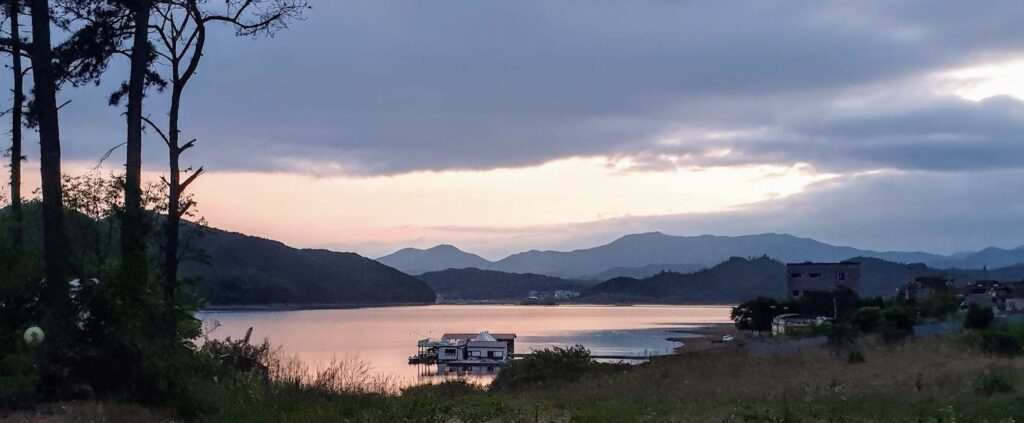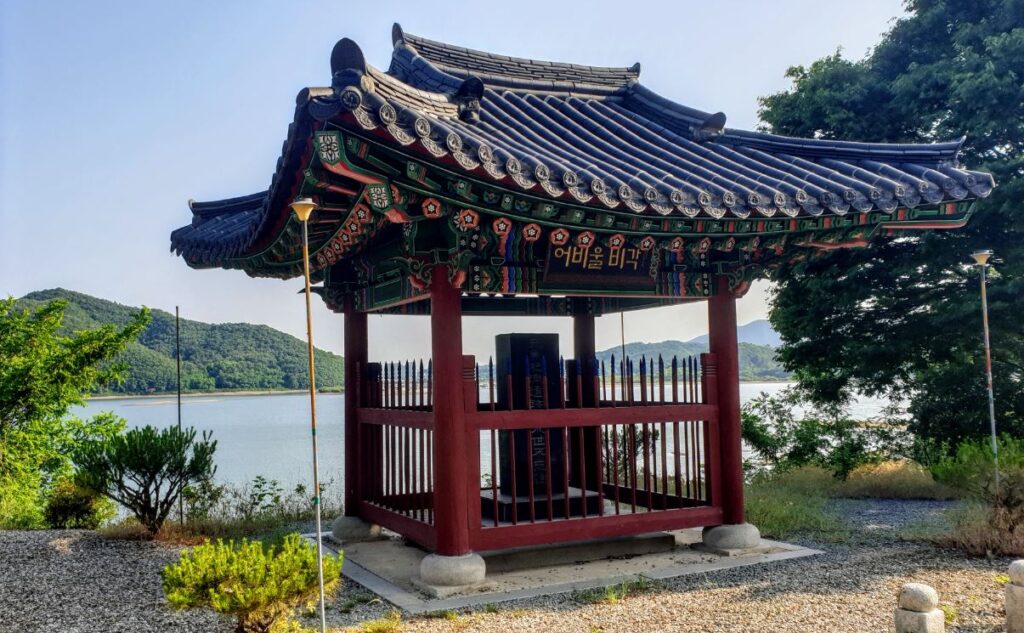I remember in the ’80s, the adventure that could be had by those stationed at Osan Air Base by going east on single-lane country roads next to the river that ran just north of base. About 10 miles from the base, there was a large, earthen dam that held back the river’s waters in what I have long known as Yi-dong reservoir. It’s a great target for my morning rides — beautiful scenery, a couple of easy hills, definitely gonna get a sunrise if I play it right. And I ride past it regularly on my way elsewhere (or back).

I’ve passed the reservoir so many times, and taken pictures of a particular monument that sits there, but I’ve never really paid attention to the monument’s purpose. It wasn’t until my return from Everland on Sunday morning that I noticed a fairly new structure by the monument that was housing a picture.

The structure also held several reproductions of documents giving the history of the (formerly) 500-year old village of Obi-ri, which, at the time of its demise between 1969 and 1971, housed over 2,000 citizens. Some of its former citizens are the ones who set this all up and keep it going. They’ve moved to places both close by and far away, but they still remember.


I love learning about the history of an area. I love looking at maps and thinking of what it was like in the heat of a summer day, following the dirt roads of the area to these small villages. I still love riding straight through old towns on my rides — or the old parts of towns that were bypassed long ago, but still hold some of the life of the area. There’s a kind of simplicity to it all. A restfulness. And when I look out of this reservoir and think about what it may have been like here when I was still an infant, I feel the haunting of the place.


You can find an article (in Korean) about it here.
